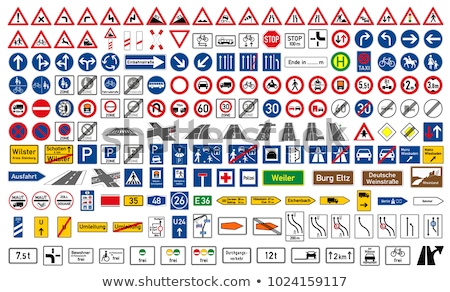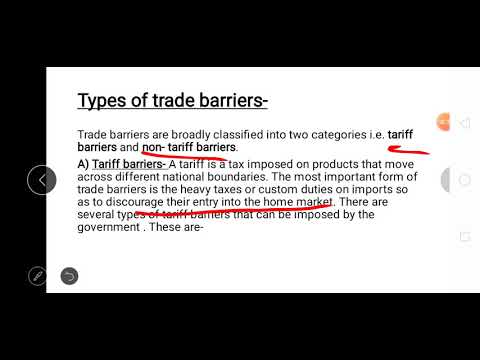

Certain sectors like transport and finance played an important role in supporting the industrial activity. According to report „India’s economy is poised to pick up in 2019, benefiting from lower oil prices and a slower pace of monetary tightening than previously expected, as inflation pressures ease,“ the report said. These are the types of jobs that are automated and done by robots. They are the most sought-after professionals; the highly skilled set in which accountants, surgeons, engineers, and lawyers fall under.
The Index of Eight Core Industries is a monthly production index, which is also considered as a lead indicator of the monthly industrial performance. The Index of Eight Core Industries is compiled based on the monthly production information received from the Source Agencies. In the sector, government owns most of the assets and it is the part of the economy concerned with providing various governmental services. If they work more, they have to be paid overtime by the employer. In this sector, employment terms are fixed and regular, and the employees get assured work and social security. The quinary sector is the part of the economy where the top-level decisions are made.

The collar also refers to young people who usually work at clubs, in stocks, or other fancy jobs. Blue-Collar Worker –This term was first used in 1924; it is a member of the working class, who performs manual labor and earns an hourly wage. It originates from the popularity that blue color enjoys among manual-laborers. Some cultures also pertain to them as the old-aged workforce, while others define them as underemployed white-collar workers. Red collar – Government workers of all types; derived from compensation received from red ink budget.
A pink-collar worker is also a member of the working class who performs in the service industry. They work in positions such as waiters, retail clerks, salespersons, certain unlicensed assistive personnel, and many other positions involving relations with people. The term was coined in the late 1970s as a phrase to describe jobs that were typically held by women; now the meaning has changed to encompass all service jobs. Historically, blue-collar workers wore uniforms, usually blue, and worked in trade occupations. White-collar workers typically wore white, button-down shirts and worked in office settings.
Prasad V. Potluri Siddhartha Institute of Technology, Vijayawada Wanted Assistant Training and Placement Officer
Skilled and honest red collared Labour is most rare and sought in developing countries. There is a well defined allocation of risk between the private sector and the public entity. As PPP involves full retention of responsibility by the government for providing the services it doesn’t amount to privatization. In this type of partnership investments being undertaken by the private sector entity, for a specified period of time. Sunrise industry is a term used for a sector that is just in its infancy but shows promise of a rapid boom. A support system was needed to facilitate the industrial activity.
- Because of its dim long-term prospects, such an industry is referred to as a sunset industry.
- Other aspects that distinguish blue-collar and white-collar workers include earnings and education level.
- Agriculture, Mining, Fishing, Forestry, Dairy etc. are some examples of this sector.
- The quinary sector is the part of the economy where the top-level decisions are made.
After the surplus production of food, people’s need for other products increased which led to the development of the secondary sector. Economic activities result in the production of goods and services while sectors are the group of economic activities classified on the basis of some criteria. As business structures and nature transform overtime, job designations and occupations become diverse. The workforce segmentation has become a mixed of white and blue collars. Popped-Collar Worker – If you come from a rich family but take 9-5 jobs for character building, you are among these popped collar workers.
Waiters, retail clerks, and sales personnel of both genders are under this category. This segment is the “gray area” of job segmentation as it is used as the neutral title to several posts, though some use it as a term for people in the information technology sector. Green collar – Usually referring to military personnel can include workers in a wide range of professions relating to the environment and renewable energy. But the contributions made by the unorganised sector to the national income, is very substantial as compared to that of the organised sector. It adds more than 60% to the national income while the contribution of the organised sector is almost half of that depending on the industry.
Acharya N.G. Ranga Agricultural University, Andhra Pradesh Wanted Research Associate
Activities in the private sector are guided by the motive to earn profits. To get such services we have to pay money to these individuals and companies. Governments raise money through taxes and other ways to meet expenses on the services rendered by it. The unorganised sector uses mainly labour intensive and indigenous technology. The workers in unorganised sector, are so scattered that the implementation of the Legislation is very inadequate and ineffective.
Other aspects that distinguish blue-collar and white-collar workers include earnings and education level. Pink collar workers are educated through training seminars or classes and they have to continue to strive for advancement in their careers. The notion is that people in white-collar jobs have higher pay grade, while blue-collared post runs by hourly wage. The term „white-collar worker“ was coined in the 1930s by Upton Sinclair, an American writer who referenced the word in connection to clerical, administrative and managerial functions during the 1930s. A white-collar worker is a salaried professional, typically referring to general office workers and management. People engaged in primary activities are called red-collar workers due to the outdoor nature of their work.
The Indian economy can be classified into various sectors on the basis of ownership, working conditions and the nature of the activities. Often called a “green job,” it covers occupations that handle the conservation and sustainability of the environment. These are jobs that are “culturally held by women,” the usage of which is already changed and applicable to all service jobs in the industry.

Pink-collar worker is one who is employed in a job that is traditionally considered to be women’s work. The term pink-collar worker was used to distinguish female-orientated jobs from the blue-collar worker, a worker in manual labor, and the white-collar worker, a professional or educated worker in office positions. People engaged in secondary activities are called blue collar workers. You may be familiar with the terms “white collar” and “blue collar”—occupational classifications used simply to distinguish employees who perform manual labor from the office employees.
Since most of the natural products we get are from agriculture, dairy, forestry, fishing, it is also called Agriculture and allied sector. In Primary sector of economy, activities are undertaken by directly using natural resources. Agriculture, Mining, Fishing, Forestry, Dairy etc. are some examples of this sector. The adjustment to market demands lead to further development of better business models paired with versatility of employees created new kinds of jobs as an offshoot. Some employees need to do manual labor; some handle tons of paperwork; others are assigned to do fieldwork; and then there are freelancers who are occasionally included in the payroll.
The Private Sector
The sector is marked by low incomes, unstable and irregular employment, and lack of protection either from legislation or trade unions. These are services that focus on the creation, re-arrangement and interpretation of new and existing ideas; data interpretation and the use and evaluation of new technologies. These are specialized tertiary activities in the ‘Knowledge Sector’ which demands a separate classification. India’s success in software and IT-enables serviced exports, has made it a significant services exporter with its share in world services exports rising from 0.6 per cent in 1990 to 3.3 per cent in 2013. Faculty recruitment vacancy notification announced by Vignan’s Foundation for Science, Technology, and Research, Guntur, Andhra Pradesh for the post of Assistant Professor.
A pink collar worker need not require as much professional training as white-collar professions. This sector’s activities help in the development of the primary and secondary sectors. By itself, economic activities in tertiary sector do not produce a goods but they are an aid or a support for the production. All economic activity was in the primary sector during early civilisation.
In China, it also refers to Communist Party officials in private companies. Black-Collar Worker – is used to referring to workers in the mining or the oil industry. Sometimes, it is also used to refer to people who are employed in black marketing activities.
It includes the industries where finished products are made from natural materials produced in the primary sector. Industrial production, cotton fabric, sugar cane production etc. activities comes under this sector. Black collar – Manual laborers in industries in which workers generally become very dirty, such as mining or oil-drilling;[unreliable source? It is a salaried professional, typically referring to general office workers and management. It originates from the color of dress shirts worn by professional and clerical workers. It is worth mentioning that agriculture sector has maximum share by working force at near 53% while services and secondary sectors shares are near 29% and 18% respectively.
No collar
A blue-collar worker is a member of the working class who performs manual labor and either earns an hourly wage or is paid piece rate for the amount of work done. Some examples of pink collar occupations are baby sitter, florist, day care worker, nurses etc. This is the class of the skilled workers who do labor using their hands, or so-called manual and technical labor. Most blue-collar occupations do not require formal education but some jobs require vocational degrees. Grey collar – Workforce that is not classified in blue collar nor white collar. It is occasionally used to describe elderly individuals working beyond the age of retirement, as well as those occupations incorporating elements of both blue- and white-collar.
The growth of secondary sector spread its influence during the industrial revolution in the nineteenth century. You can call yourself as having no collar when you work for the satisfaction and not for payment. PPP is an arrangement between government and private sector for the provision of public assets and/or public services.
It can also be defined as a sector, which is registered with the government and a number of acts apply to the enterprises. Though India ranks low in terms of per capita income, its share of services in GDP is approaching the global average. Interestingly, however, the contribution of services to employment was significantly red collar jobs lower than the world average. On the other hand Sunrise industry rapid emergence may threaten a competing industry sector that is already in decline. Because of its dim long-term prospects, such an industry is referred to as a sunset industry. It is called so because it forms the base for all other products.
It is sometimes referred as the citizen sector, which is run by private individuals or groups, usually as a means of enterprise for profit, and is not controlled but regulate by the State. In the private sector, ownership of assets and delivery of services is in the hands of private individuals or companies. In this sector wage-paid labour is largely non-unionised due to casual and seasonal nature of employment and scattered location of enterprises. The industry is typically characterized by high growth rates, high degree of innovation and generally has plenty of public awareness about the sector and investors get attracted to its long-term growth prospects. Today, women have more opportunities in traditionally male white-collar jobs and men work in traditionally female pink-collar jobs. Eight Core Industries are Electricity, steel, refinery products, crude oil, coal, cement, natural gas and fertilizers.
